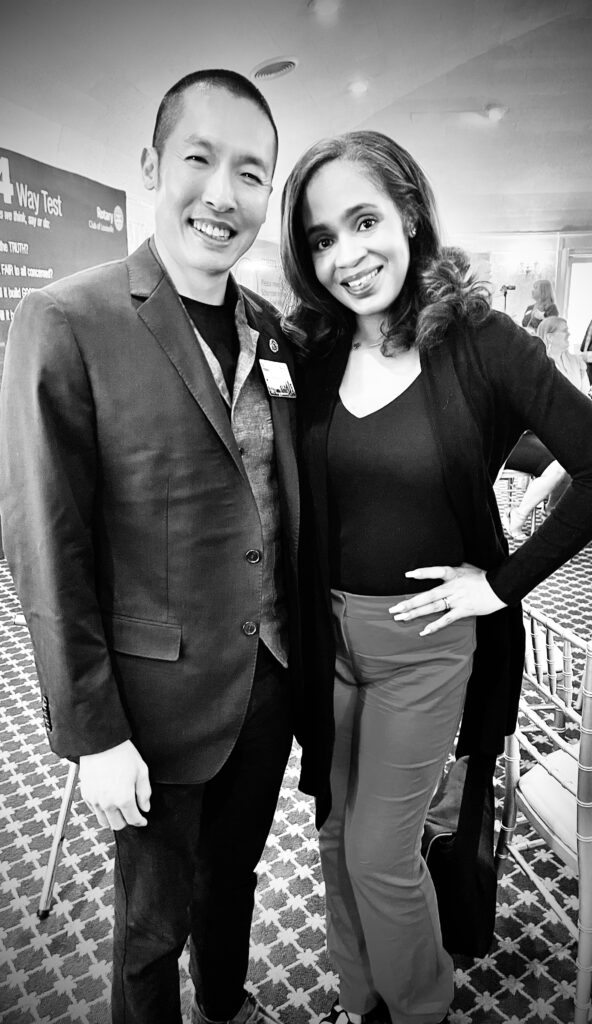At the heart of Kentucky, where the love for bourbon is as deep as its historical roots, the Rotary Club of Louisville’s weekly meeting at the Woman Club of Louisville provided a stage for an inspiring encounter. Among the distinguished attendees were Brittany Penny, the founder of IX Bourbon Whiskey, and her husband, who together are making waves in the traditionally male-dominated bourbon industry.
Raised in Louisville, Kentucky, Brittany developed a deep appreciation for bourbon, sparked by her father’s extensive knowledge and collection. Her passion for bourbon took a business turn in 2020 during her pregnancy when she was able to discern different aroma profiles from her husband’s bourbon collection. Guided by these newly discovered nuances, she took a leap of faith and, with the unwavering support of her husband, launched IX Bourbon Whiskey. It was not just about creating a unique brand of bourbon, but about disrupting an industry and paving the way for female entrepreneurs.

For the members of the Rotary Club of Louisville, and especially for serial entrepreneur and soon-to-be bourbon brand owner Di Tran, this tale of perseverance and determination hit a powerful chord. Like the Pennys, Tran is no stranger to the challenges of establishing a new brand, navigating the complexities of sourcing bourbon, bottling, and marketing. The meeting served as a platform for shared experiences, struggles, and triumphs.
What resonated with Tran was Brittany’s ethos, “Be yourself, flaw and all.” This maxim aligns perfectly with Tran’s own philosophy, set to be shared in his forthcoming book, “Drop the FEAR and Focus on the FAITH.” The book embraces the concept of learning from failures, appreciating them, and the strength found in rising from them.
Tran’s soon-to-be-released bourbon, named Belief, shares this essence of embracing challenges and rising above. It represents not just a product but a philosophy, a testament to Tran’s journey of faith and determination, akin to Brittany’s endeavor with IX Bourbon Whiskey.
The Penny’s story of daring to dream and challenge the status quo, and their demonstration of remarkable resilience, reflects a shared ethos with Di Tran. In Brittany, Tran found not just an inspiring entrepreneur, but also a mirror reflecting his own beliefs and values.
The Rotary Club meeting was more than just a gathering; it was an affirmation of shared values, of resilience, and a testament to the spirit of entrepreneurship. The stories of Brittany Penny and Di Tran serve as a reminder of the power of faith and perseverance, the importance of learning from failures, and the potential that lies in daring to dream.




















